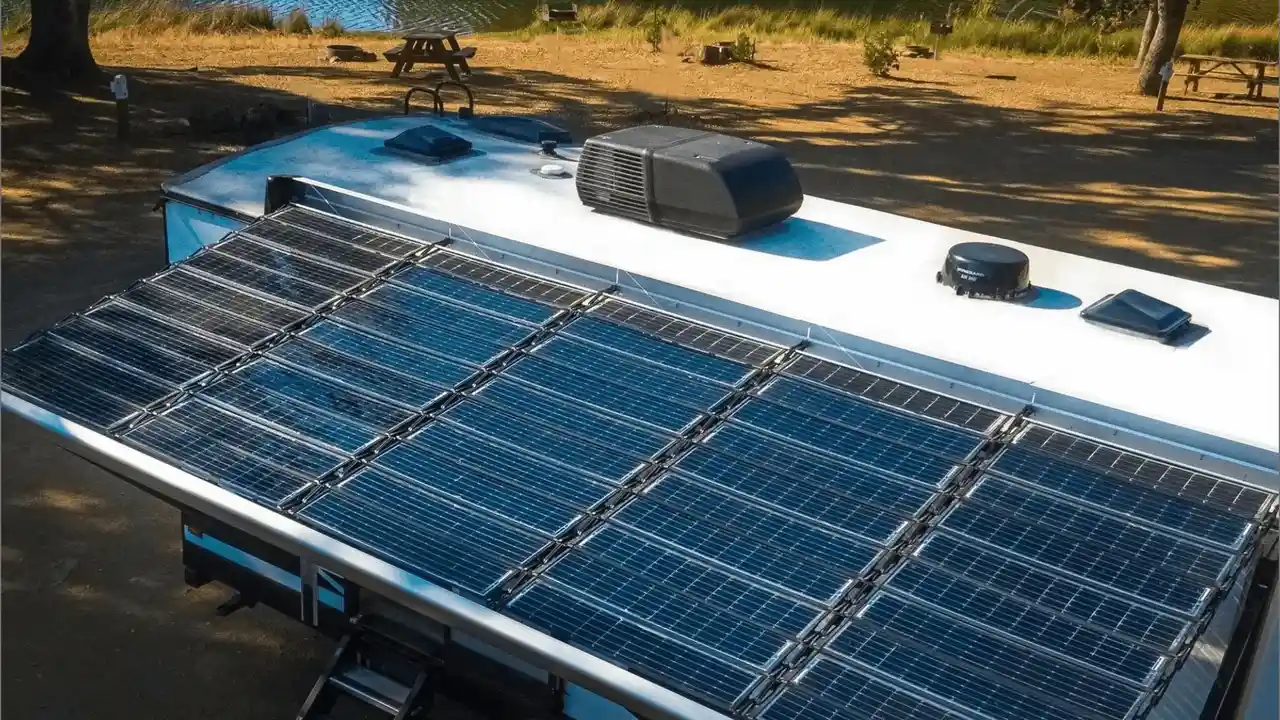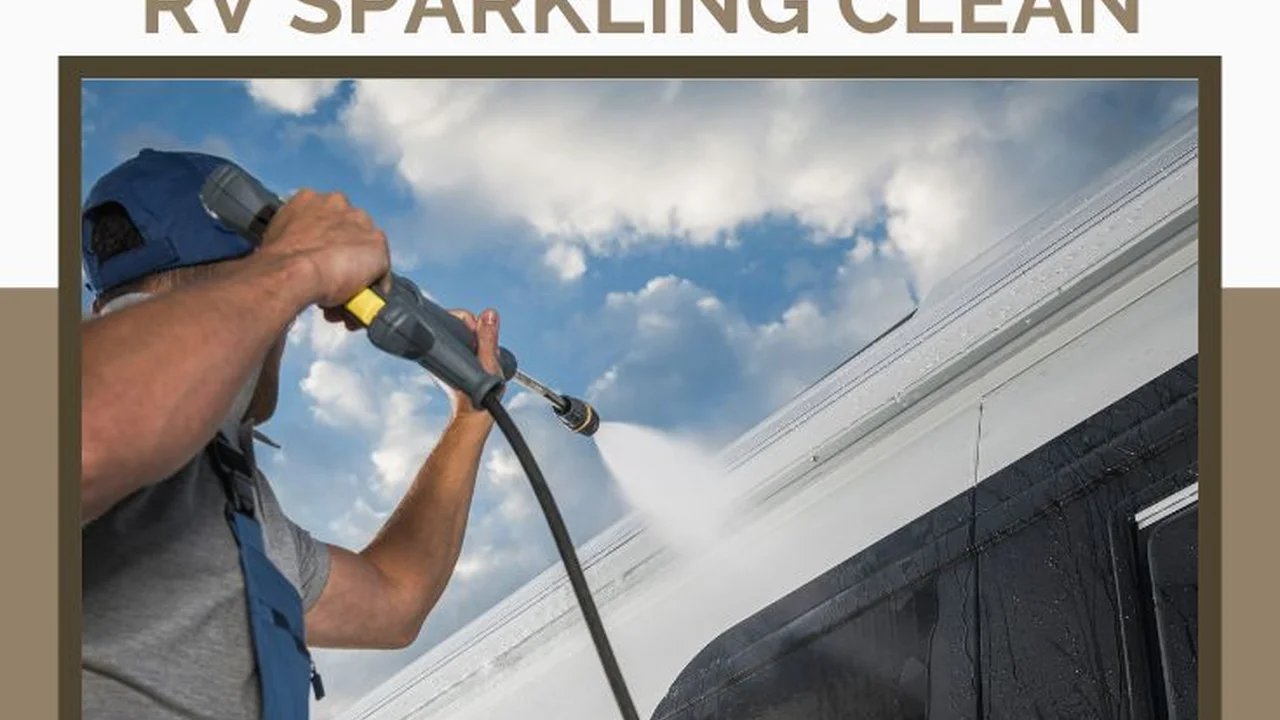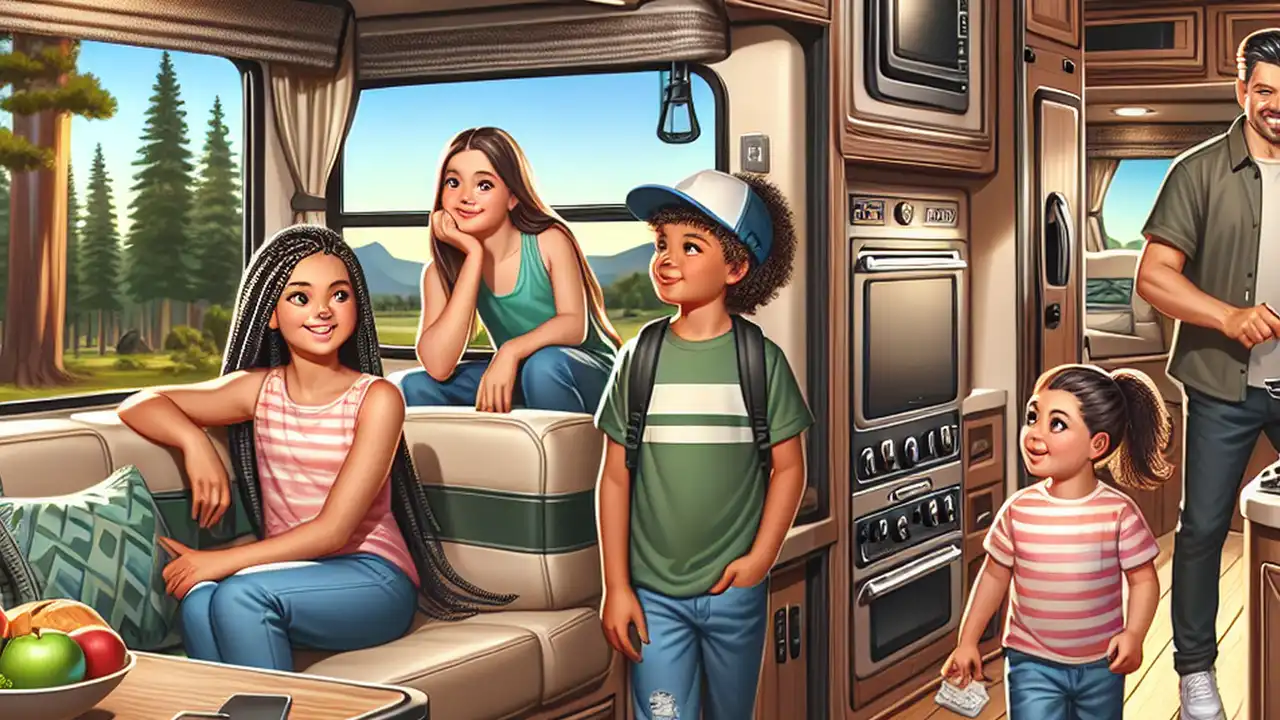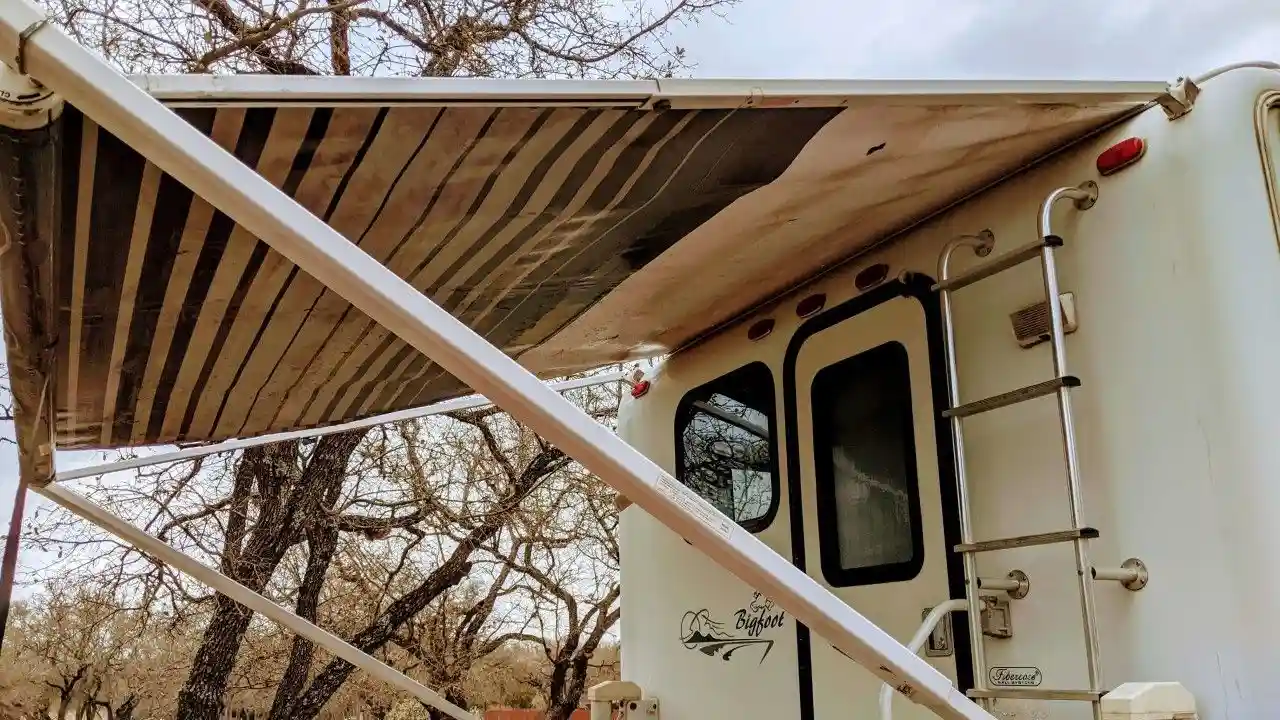RV Inspection Checklist: Ensuring a Safe Purchase
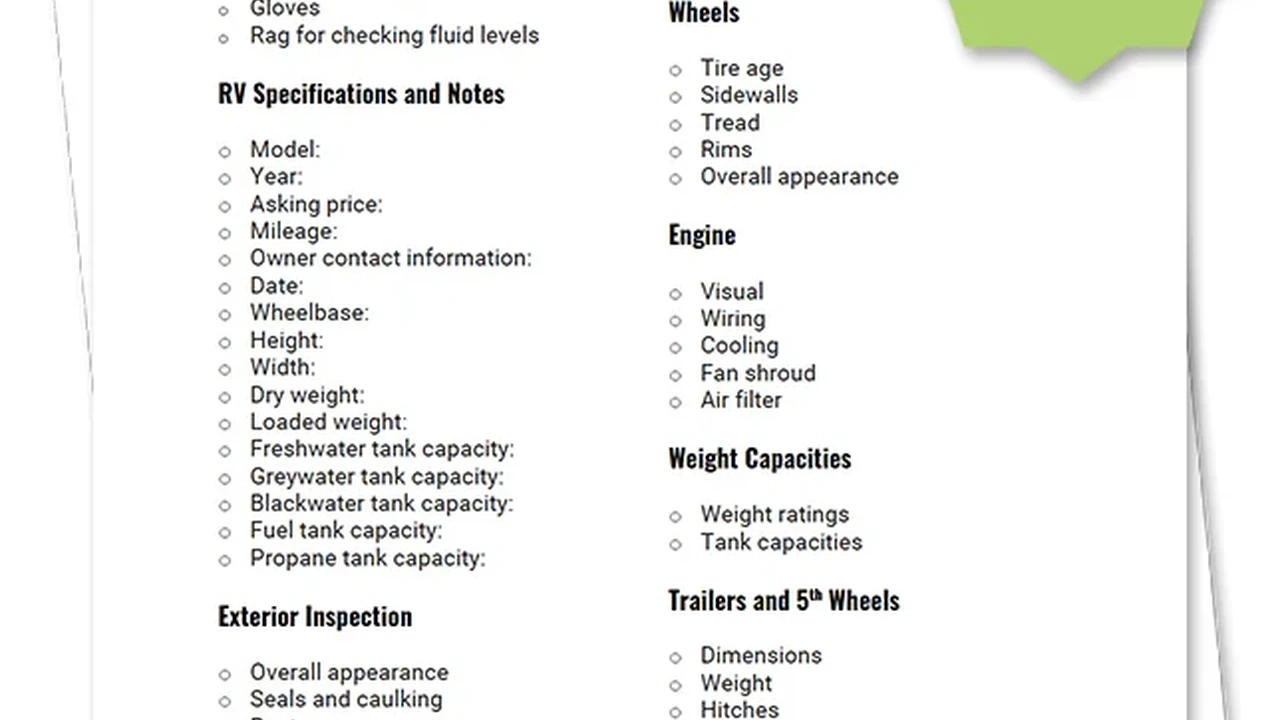
Understanding the RV Lifestyle What to Expect on the Road
So, you're thinking about joining the RV community? Awesome! It's a world of freedom, adventure, and...well, a little bit of troubleshooting. But before you hit the road, let's talk about what the RV lifestyle really means.
First off, forget the idea of a constant vacation. RVing is a lifestyle, not just a trip. You'll be dealing with things like emptying holding tanks (yes, that's exactly what it sounds like), finding campsites, and maintaining your rig. But don't let that scare you! The rewards are incredible.
Imagine waking up to a different view every morning. One day you're surrounded by towering redwoods, the next you're overlooking a sparkling lake. You can explore national parks, visit quirky roadside attractions, and meet fascinating people from all walks of life. The possibilities are endless.
But let's be real, it's not all sunshine and rainbows. RVing can be challenging. You'll need to learn how to conserve water and electricity, navigate tight spaces, and deal with unexpected breakdowns. That's where preparation comes in.
Before you even buy an RV, do your research. Figure out what kind of RV best suits your needs. Do you need a massive Class A motorhome with all the bells and whistles, or will a smaller travel trailer do the trick? Consider your budget, your travel style, and how much space you need.
Once you have an RV, invest in some essential gear. A good surge protector is a must to protect your electronics from power surges at campgrounds. A water filter will ensure you have clean drinking water. And a reliable GPS system will help you navigate unfamiliar roads.
And don't forget about maintenance! RVs require regular upkeep to stay in good condition. That means checking the tires, lubricating the moving parts, and keeping the roof clean. A little preventative maintenance can go a long way in preventing costly repairs down the road.
The RV lifestyle is about embracing the unexpected. Things will go wrong. You'll get lost. You'll run out of propane in the middle of the night. But that's all part of the adventure. Learn to laugh at the mishaps, and you'll create memories that will last a lifetime.
RV Types A Comprehensive Overview of Recreational Vehicles
Okay, let's dive into the different types of RVs. This is crucial because choosing the right RV is like finding the perfect pair of shoes – it needs to fit your lifestyle and your needs.
Class A Motorhomes: The Luxury Liners
Think of these as the kings and queens of the RV world. They're the biggest, the most luxurious, and often the most expensive. Class A motorhomes are built on a commercial bus or truck chassis, offering a smooth ride and plenty of space. They typically have all the amenities of a small apartment, including a full kitchen, bathroom, living area, and bedroom.
Pros: Spacious, luxurious, comfortable for long trips, often have advanced features like automatic leveling systems and satellite TV.
Cons: Expensive, difficult to maneuver in tight spaces, can be fuel inefficient.
Example: The Newmar Dutch Star is a popular Class A motorhome known for its high-quality construction and luxurious features. Expect to pay upwards of $300,000 for a new model.
Class B Motorhomes (Camper Vans): The Nimble Explorers
These are the smaller, more agile cousins of the Class A motorhomes. Class B motorhomes, also known as camper vans, are built on a van chassis, making them easier to drive and park. They're perfect for solo travelers or couples who want to explore off-the-beaten-path destinations.
Pros: Easy to drive and park, fuel efficient, can go almost anywhere, great for boondocking (camping without hookups).
Cons: Limited space, can be cramped for long trips, may not have all the amenities of a larger RV.
Example: The Winnebago Revel is a popular Class B motorhome designed for off-road adventures. It features a solar panel, a lithium battery system, and a four-wheel-drive system. Prices start around $150,000.
Class C Motorhomes: The Family-Friendly Option
Class C motorhomes are a good compromise between the size and luxury of a Class A and the agility of a Class B. They're built on a cutaway van chassis, with an over-cab sleeping area. This makes them a great option for families who need extra sleeping space.
Pros: More affordable than Class A motorhomes, easier to drive than Class A motorhomes, good for families.
Cons: Can be noisy, limited storage space, may not be as luxurious as a Class A motorhome.
Example: The Thor Chateau is a popular Class C motorhome known for its affordability and family-friendly features. Prices start around $80,000.
Travel Trailers: The Towable Homes
Travel trailers are towed behind a car, truck, or SUV. They come in a wide range of sizes and styles, from small pop-up trailers to large fifth-wheel trailers. Travel trailers are a great option for people who want the flexibility to leave their RV at a campsite and explore the surrounding area in their tow vehicle.
Pros: More affordable than motorhomes, can be towed by a variety of vehicles, offer a wide range of floorplans and features.
Cons: Require a tow vehicle, can be difficult to maneuver in tight spaces, require more setup time at the campsite.
Example: The Airstream Flying Cloud is a classic travel trailer known for its iconic aluminum exterior and high-quality construction. Prices start around $70,000.
Fifth-Wheel Trailers: The Spacious Towables
Fifth-wheel trailers are similar to travel trailers, but they have a special hitch that connects to the bed of a pickup truck. This gives them more stability and allows for larger floorplans. Fifth-wheel trailers are a great option for people who want a lot of space and don't mind towing a large trailer.
Pros: Very spacious, stable towing, often have luxurious features.
Cons: Require a pickup truck with a fifth-wheel hitch, can be difficult to maneuver in tight spaces.
Example: The Grand Design Reflection is a popular fifth-wheel trailer known for its spacious floorplans and luxurious amenities. Prices start around $50,000.
Pop-Up Campers: The Lightweight Option
Pop-up campers are lightweight trailers that fold down for easy towing and storage. They're a great option for people who want to camp in remote locations or who don't have a lot of storage space. When set up, they offer a surprising amount of living space, with canvas sides and a hard roof.
Pros: Lightweight, easy to tow and store, affordable.
Cons: Limited insulation, can be difficult to set up in windy conditions, may not have a bathroom or kitchen.
Example: The Jayco Jay Sport is a popular pop-up camper known for its affordability and ease of use. Prices start around $10,000.
RV Financing Options Making Your Dream a Reality
So, you've found the perfect RV, but now comes the question of how to pay for it. RV financing is a bit different than car financing, so let's break it down.
RV Loans: The Traditional Route
RV loans are similar to car loans, but they typically have longer terms and higher interest rates. Lenders consider RVs to be a riskier investment than cars, so they charge higher rates to compensate. You can get an RV loan from a bank, credit union, or online lender.
Factors that affect your RV loan rate: Credit score, down payment, loan term, type of RV.
Example: Bank of America offers RV loans with competitive rates and flexible terms. You'll need a good credit score to qualify.
Secured vs. Unsecured RV Loans: Understanding the Difference
Most RV loans are secured loans, meaning the RV itself serves as collateral for the loan. If you default on the loan, the lender can repossess the RV. Unsecured RV loans are rare and typically have higher interest rates.
RV Loan Down Payment: How Much Do You Need?
The down payment required for an RV loan varies depending on the lender and the type of RV. Generally, you can expect to pay a down payment of 10-20% of the purchase price.
RV Loan Terms: Finding the Right Fit
RV loan terms can range from a few years to 20 years or more. A longer loan term will result in lower monthly payments, but you'll pay more interest over the life of the loan. A shorter loan term will result in higher monthly payments, but you'll pay less interest overall.
RV Loan Pre-Approval: A Smart Move
Getting pre-approved for an RV loan before you start shopping can give you a better idea of how much you can afford. It also gives you more bargaining power when you're negotiating the price of the RV.
RV Loan Refinancing: Saving Money Down the Road
If you already have an RV loan, you may be able to save money by refinancing it. Refinancing involves taking out a new loan with a lower interest rate to pay off your existing loan. This can lower your monthly payments and save you money over the life of the loan.
RV Financing Alternatives: Exploring Your Options
If you don't qualify for an RV loan, or if you're looking for alternative financing options, you may consider a personal loan, a home equity loan, or a line of credit.
Personal Loans: These are unsecured loans that can be used for any purpose. They typically have higher interest rates than secured loans.
Home Equity Loans: These loans are secured by your home. They typically have lower interest rates than personal loans, but you risk losing your home if you default on the loan.
Lines of Credit: These are revolving credit accounts that allow you to borrow money as needed. They typically have variable interest rates.
RV Insurance Protecting Your Investment on the Road
RV insurance is essential for protecting your investment and ensuring your financial security in case of an accident. But RV insurance is not the same as car insurance. It's a specialized type of insurance that covers the unique risks associated with RVing.
RV Insurance Coverage Options: What You Need to Know
RV insurance policies typically include the following coverage options:
Liability Coverage: This covers bodily injury or property damage that you cause to others in an accident.
Collision Coverage: This covers damage to your RV if you're involved in an accident, regardless of who is at fault.
Comprehensive Coverage: This covers damage to your RV from other causes, such as fire, theft, vandalism, and natural disasters.
Uninsured/Underinsured Motorist Coverage: This covers your injuries and damages if you're hit by an uninsured or underinsured driver.
Medical Payments Coverage: This covers medical expenses for you and your passengers if you're injured in an accident.
Personal Property Coverage: This covers your personal belongings inside your RV.
Roadside Assistance Coverage: This covers towing, jump starts, tire changes, and other roadside services.
RV Insurance Cost Factors: What Influences Your Premium?
The cost of RV insurance varies depending on several factors, including:
Type of RV: Larger and more expensive RVs typically cost more to insure.
Age and Condition of RV: Older RVs may cost more to insure due to increased risk of breakdowns.
Driving Record: A clean driving record will result in lower insurance premiums.
Coverage Limits: Higher coverage limits will result in higher insurance premiums.
Deductible: A higher deductible will result in lower insurance premiums.
Location: RV insurance rates vary by state.
Finding the Best RV Insurance Policy: Tips and Recommendations
Here are some tips for finding the best RV insurance policy:
Shop around: Get quotes from multiple insurance companies to compare rates and coverage options.
Consider your needs: Choose coverage options that are appropriate for your RV and your travel style.
Read the fine print: Understand the terms and conditions of the policy before you buy it.
Ask about discounts: Many insurance companies offer discounts for things like safety features, membership in RV clubs, and bundling your RV insurance with other policies.
Example: Progressive offers RV insurance with a variety of coverage options and discounts. They also have a user-friendly website where you can get a quote online.
RV Maintenance Tips Keeping Your Rig in Top Condition
Regular RV maintenance is crucial for keeping your rig in top condition and preventing costly repairs. Think of it like taking care of your house – a little bit of preventative maintenance can go a long way.
RV Exterior Maintenance: Protecting Your Investment
Washing and Waxing: Regularly wash and wax your RV to protect the paint and prevent oxidation. Use a mild soap and a soft brush to avoid scratching the surface. Waxing will help protect the paint from UV rays and keep it looking shiny.
Roof Inspection and Sealing: Inspect your RV roof regularly for cracks, leaks, and other damage. Seal any cracks or leaks immediately to prevent water damage. Use a sealant that is specifically designed for RV roofs.
Tire Maintenance: Check your tire pressure regularly and inflate them to the recommended pressure. Inspect your tires for wear and tear and replace them when necessary. Rotate your tires regularly to ensure even wear.
Awning Care: Clean your RV awning regularly to remove dirt, debris, and mildew. Inspect the awning for tears and repair them immediately. Avoid using the awning in windy conditions.
RV Interior Maintenance: Keeping Things Comfortable
Appliance Maintenance: Clean and maintain your RV appliances regularly. This includes cleaning the refrigerator coils, cleaning the oven, and descaling the water heater.
Plumbing Maintenance: Flush your RV water system regularly to remove sediment and bacteria. Inspect your plumbing for leaks and repair them immediately. Use RV-specific antifreeze to winterize your plumbing system in cold weather.
Electrical Maintenance: Inspect your RV electrical system regularly for loose connections and damaged wiring. Test your GFCI outlets to ensure they are working properly. Use a surge protector to protect your electronics from power surges.
Cleaning and Organization: Keep your RV clean and organized to prevent mold, mildew, and pests. Vacuum and dust regularly, and wipe down surfaces with a disinfectant cleaner.
RV System Checks: Ensuring Everything Works Properly
Battery Maintenance: Check your RV batteries regularly and keep them charged. Clean the battery terminals to prevent corrosion. Use a battery maintainer to keep your batteries charged when your RV is in storage.
Generator Maintenance: Run your RV generator regularly to keep it in good working condition. Change the oil and filter according to the manufacturer's recommendations. Clean the generator air filter regularly.
Propane System Check: Inspect your RV propane system regularly for leaks. Have a qualified technician inspect your propane system annually.
Essential RV Maintenance Tools: What You Need in Your Toolkit
Here are some essential RV maintenance tools to keep in your toolkit:
Socket Set: For tightening and loosening nuts and bolts.
Wrench Set: For working on plumbing and other components.
Screwdriver Set: For tightening and loosening screws.
Pliers: For gripping and cutting wires.
Multimeter: For testing electrical circuits.
Caulk Gun: For sealing cracks and leaks.
Tire Pressure Gauge: For checking tire pressure.
Torque Wrench: For tightening lug nuts to the proper torque.
RV Camping Destinations Unforgettable Adventures Await
One of the best things about RVing is the freedom to explore new places. From national parks to quirky roadside attractions, the possibilities are endless. Let's explore some amazing RV camping destinations.
National Parks: America's Natural Treasures
National parks are a must-visit for any RVer. They offer stunning scenery, diverse wildlife, and a wide range of outdoor activities. However, reservations are often required, especially during peak season.
Yellowstone National Park: Home to geysers, hot springs, and abundant wildlife.
Grand Canyon National Park: A breathtaking canyon that is millions of years old.
Yosemite National Park: Known for its towering granite cliffs, giant sequoia trees, and stunning waterfalls.
Acadia National Park: A beautiful park on the coast of Maine with rocky beaches, granite peaks, and lush forests.
State Parks: Hidden Gems Across the Country
State parks are often less crowded than national parks and offer a more affordable camping experience. They also offer a wide range of activities, such as hiking, fishing, and swimming.
Hocking Hills State Park (Ohio): Features stunning rock formations, waterfalls, and hiking trails.
Custer State Park (South Dakota): Home to bison, elk, and other wildlife.
Dead Horse Point State Park (Utah): Offers stunning views of the Canyonlands National Park.
Private Campgrounds: Amenities and Convenience
Private campgrounds offer a variety of amenities, such as swimming pools, playgrounds, and laundry facilities. They are often located near popular tourist attractions.
KOA (Kampgrounds of America): A chain of campgrounds with locations across the country.
Good Sam Parks: A network of campgrounds that offer discounts to Good Sam Club members.
Boondocking (Dry Camping): Off-Grid Adventures
Boondocking, also known as dry camping, involves camping without hookups (water, electricity, and sewer). It's a great way to save money and experience the solitude of nature.
Bureau of Land Management (BLM) Land: Offers free or low-cost camping on millions of acres of public land.
National Forest Land: Similar to BLM land, national forest land offers opportunities for boondocking.
RV Camping Apps and Resources: Planning Your Trip
Here are some helpful RV camping apps and resources:
Campendium: A website and app that provides reviews and information on campgrounds and RV parks.
Allstays: A website and app that provides information on campgrounds, RV parks, and other RV-related resources.
RV Parky: A website and app that provides reviews and information on RV parks and campgrounds.
RV Safety Tips Ensuring a Secure and Enjoyable Journey
RV safety is paramount. Before you hit the road, make sure you're prepared for anything. This includes knowing how to handle your RV, understanding safety regulations, and being aware of potential hazards.
Pre-Trip RV Inspection: A Must-Do Before Every Trip
Before you leave on any RV trip, perform a thorough inspection of your rig. This will help you identify potential problems before they become serious.
Check Tires: Inspect your tires for wear and tear, and make sure they are properly inflated.
Check Brakes: Inspect your brakes to make sure they are working properly.
Check Lights: Make sure all of your lights are working, including headlights, taillights, and turn signals.
Check Fluids: Check your engine oil, coolant, and other fluids.
Check Propane System: Inspect your propane system for leaks.
Check Smoke Detector and Carbon Monoxide Detector: Make sure your smoke detector and carbon monoxide detector are working properly.
Safe RV Driving Practices: Staying in Control on the Road
Driving an RV is different than driving a car. RVs are larger and heavier, so they require more skill and attention.
Drive Slowly: RVs are more difficult to control at high speeds. Drive slowly and carefully, especially in windy conditions.
Allow Extra Following Distance: RVs require more distance to stop than cars. Allow plenty of following distance.
Be Aware of Your Surroundings: Be aware of your surroundings and watch out for other vehicles, pedestrians, and obstacles.
Use Your Mirrors: Use your mirrors to check your blind spots and make sure you have a clear view of the road.
Take Breaks: Driving an RV can be tiring. Take frequent breaks to avoid fatigue.
RV Fire Safety: Preventing and Responding to Emergencies
Fires can be devastating in an RV. Take precautions to prevent fires and be prepared to respond quickly if one occurs.
Install Smoke Detectors and Carbon Monoxide Detectors: Install smoke detectors and carbon monoxide detectors and test them regularly.
Have a Fire Extinguisher: Keep a fire extinguisher in your RV and know how to use it.
Be Careful with Open Flames: Be careful when using open flames, such as candles and propane stoves.
Never Leave Cooking Unattended: Never leave cooking unattended.
Store Flammable Materials Safely: Store flammable materials in a safe place.
RV Security: Protecting Your Belongings
RVs can be vulnerable to theft. Take precautions to protect your belongings.
Lock Your Doors and Windows: Lock your doors and windows when you leave your RV.
Install an Alarm System: Consider installing an alarm system.
Park in Well-Lit Areas: Park in well-lit areas.
Don't Leave Valuables in Plain Sight: Don't leave valuables in plain sight.
Be Aware of Your Surroundings: Be aware of your surroundings and watch out for suspicious activity.
RV Organization Hacks Maximizing Space and Efficiency
RV living requires smart organization. Space is limited, so you need to make the most of every nook and cranny. Let's explore some RV organization hacks.
Maximizing Storage Space: Utilizing Every Nook and Cranny
Vertical Storage: Use vertical storage solutions, such as shelves and hanging organizers, to maximize space.
Under-Bed Storage: Utilize the space under your bed for storage.
Over-the-Door Organizers: Use over-the-door organizers to store toiletries and other small items.
Collapsible Containers: Use collapsible containers to store items when they're not in use.
Stackable Bins: Use stackable bins to organize items in cabinets and closets.
Decluttering Your RV: Getting Rid of Unnecessary Items
Be Ruthless: Be ruthless when decluttering your RV. Get rid of anything you don't need or use.
The One-In, One-Out Rule: For every new item you bring into your RV, get rid of one old item.
Donate or Sell Unwanted Items: Donate or sell unwanted items to free up space and make some extra money.
Kitchen Organization: Creating a Functional Cooking Space
Use Magnetic Strips: Use magnetic strips to store knives and other metal utensils.
Hang Pots and Pans: Hang pots and pans from hooks to save space in cabinets.
Use Spice Racks: Use spice racks to organize spices.
Use Drawer Dividers: Use drawer dividers to organize utensils and other kitchen items.
Bathroom Organization: Keeping Things Tidy and Functional
Use Suction Cup Hooks: Use suction cup hooks to hang towels and other items.
Use a Shower Caddy: Use a shower caddy to store shampoo, conditioner, and other shower items.
Use a Toilet Paper Holder with Storage: Use a toilet paper holder with storage to store extra rolls of toilet paper.
Living Area Organization: Creating a Comfortable and Inviting Space
Use a Coffee Table with Storage: Use a coffee table with storage to store blankets, pillows, and other items.
Use a Bookcase: Use a bookcase to store books and other items.
Use Baskets: Use baskets to store blankets, pillows, and other items.
:max_bytes(150000):strip_icc()/277019-baked-pork-chops-with-cream-of-mushroom-soup-DDMFS-beauty-4x3-BG-7505-5762b731cf30447d9cbbbbbf387beafa.jpg)



